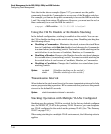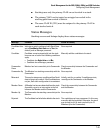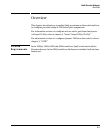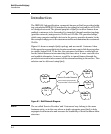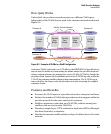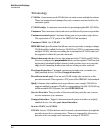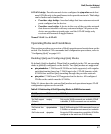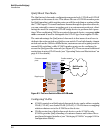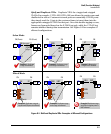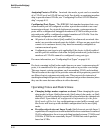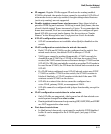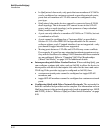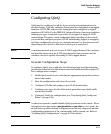
QinQ (Provider Bridging)
Introduction
Terminology
C-VLANs. Customer network VLANs that can exist across multiple locations.
These are assigned and managed by each customer and are local to the
customer space.
C-VLAN bridge. A customer-owned device operating regular 802.1Q VLANs.
Customer. The consumer of network services delivered by a service provider.
Customer-network port. Customer-facing port on a provider edge device.
The equivalent of ‘CN’ ports of the IEEE 802.1ad standard.
Customer VLAN. See C-VLAN.
IEEE 802.1ad. Specification that allows a service provider to assign a unique
VLAN identifier (called the Service VLAN ID or S-VID) to customers using
multiple VLANs, thereby extending the total number of VLANs that can
be supported within the provider network.
Mixed vlan mode device. Device that supports both C-VLANs and S-VLANs.
A device configured in qinq mixedvlan mode can do regular CVLAN switch-
ing/routing (standard bridge behavior) and can also serve as a provider
edge device tunneling frames into and out of the provider network.
Port-based interface. Untagged customer-network ports or trunks on a
QinQ enabled device. See also S-tagged interface.
Provider-network port. Port on an S-VLAN bridge that connects to the
provider network. This equates to ‘PN’ ports of the IEEE 802.1ad standard.
QinQ. A feature that enables service providers to use a single VLAN-ID to
support multiple customer VLANs by encapsulating the 802.1Q VLAN tag
within another 802.1Q frame. See also IEEE 802.1ad.
Service Provider. The provider of the network that provides one or more
service instances to a customer.
S-tagged interface. Tagged customer-network ports or trunks on a QinQ
enabled device. See also port-based interface.
Service VLAN. See S-VLAN.
S-VLAN. Service VLANs that are used to tunnel customer frames through the
provider network to customer sites. These are managed by the service
provider who can assign each customer a unique S-VLAN ID.
8-6



